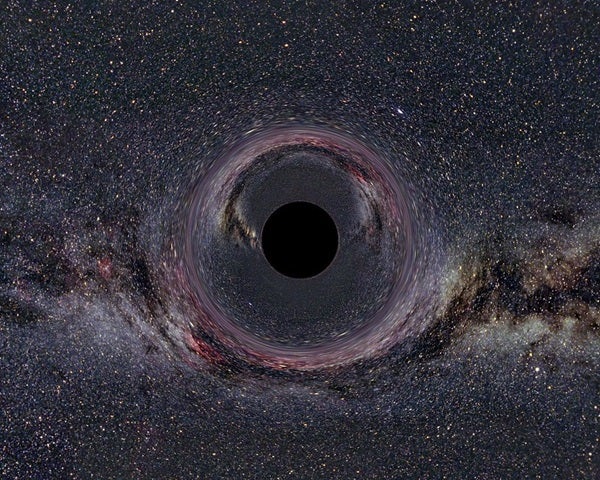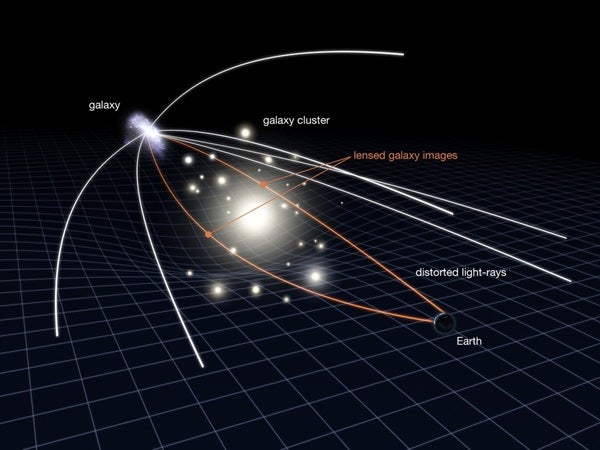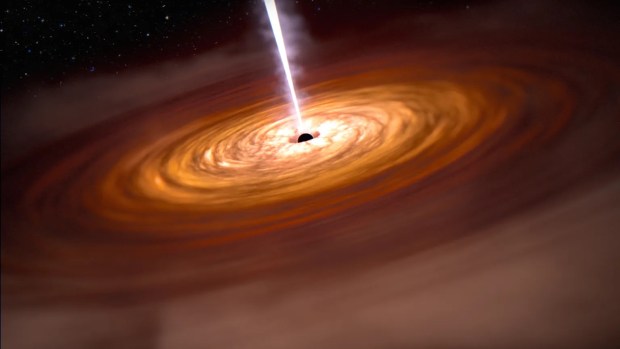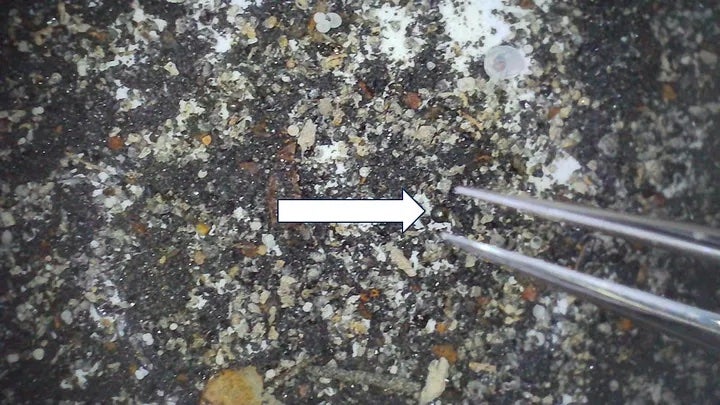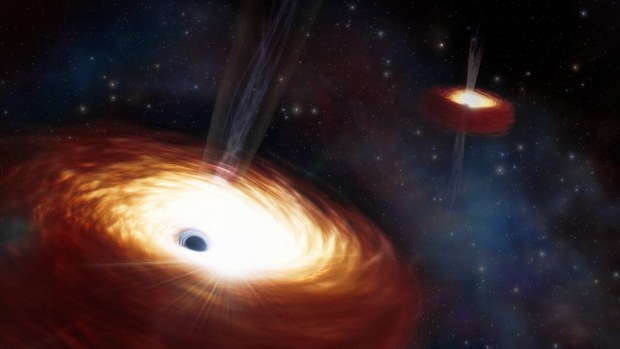Editor’s Note, 6/10/22: Both papers highlighted in this story have now been peer-reviewed and accepted for publication.
Each second, a brand new baby black hole is born somewhere in the cosmos as a massive star collapses under its own weight.
But black holes themselves are invisible. Historically, astronomers have only been able to detect these stellar-mass black holes when they are acting on a companion.
Now, a team of scientists has made the first-ever confirmed detection of a stellar-mass black hole that’s completely alone. The discovery opens up the possibility of finding even more — an exciting prospect, considering there should be around 100 million such “rogue” black holes drifting through our galaxy unseen.
Relying on the neighbors
Black holes are difficult to find because they don’t shine like stars. Anything with mass warps the fabric of space-time, and the greater the mass, the more extreme the warp. Black holes pack so much mass into such a tiny area that space folds back in on itself. That means that if anything, even light, gets too close, its path will always bend back toward the center of the black hole.
Astronomers have found a couple hundred of these ghostly goliaths indirectly, by seeing how they influence their surroundings. They’ve identified around 20 black holes of the small, stellar-mass variety in our galaxy by watching as stars are devoured by invisible companions. As the black hole pulls matter from its neighbor, the material forms a swirling, glowing accretion disk that signals the black hole’s presence.
After decades of searching, astronomers have finally found an isolated stellar-mass black hole. Located about 5,200 light-years away toward the center of our galaxy, the yet-to-be-named rogue black hole weighs in at just over seven times the Sun’s mass. It’s moving faster than nearly all the visible stars in its area, which hints at how it formed.
Scientists think that when a massive star runs out of fuel and collapses, the supernova explosion it experiences may be uneven. “This black hole seems to have gotten a natal kick at birth that sent it speeding away,” says Kailash Sahu, an astronomer at the Space Telescope Science Institute in Baltimore, who led the study. The team’s results have been submitted to The Astrophysical Journal.
Seeing the Unseeable
The team combined two cosmic techniques to spot the black hole: gravitational lensing and astrometry. The first works because when gravity warps space-time, it changes the path light takes when it passes close by. When a celestial object passes very close to a more distant star in the sky from our line of sight, the starlight bends as it travels past the closer object. If the foreground object doing the bending is relatively small — say, a planet, star, or black hole, rather than an entire galaxy or galaxy cluster — the process is called, specifically, microlensing.
Microlensing makes the nearer object act as a natural magnifying glass, temporarily brightening the distant star’s light — an effect telescopes can pick up. Astronomers can roughly estimate how massive the nearer object is by how long the spike in starlight lasts; more massive objects create longer microlensing events. So, a long microlensing event caused by something we can’t see could signal a rogue black hole.
But black holes can’t be confirmed by microlensing alone. A small, faint star moving slowly could masquerade as a black hole. It too would produce a long signal, due to its slow speed, and if the star is dim enough, astronomers might not see it, only able to detect light from the background star.
That’s where astrometry comes in. This technique involves making precise measurements of an object’s position. By seeing how much the background star’s position appears to shift during a microlensing event, astronomers can very accurately find out how massive the nearer object is.
“That’s how we knew we found a black hole,” Sahu says. “The object we detected is so massive that if it were a star, it would be shining brightly; yet we detected no light from it.”
This discovery is the culmination of seven years of observations. The microlensing signals that can reveal small, solo black holes last almost a year. Two ground-based telescopes, the Optical Gravitational Lensing Experiment (OGLE) and Microlensing Observations in Astrophysics (MOA) telescope, picked up on the event. It lasted long enough that astronomers suspected the lensing object could be a black hole.
That’s when they began making astrometric measurements. The deflection the intervening object caused in the background star’s light was so small that only the Hubble Space Telescope could detect it. The team spent several more years analyzing the astrometric signal, which in general can last five to 10 times longer than its microlensing counterpart.
“It’s extremely gratifying to be part of such a monumental discovery,” Sahu says. “I’ve been searching for rogue black holes for more than a decade, and it’s exciting to finally find one! I hope it will be the first of many.”
Establishing the cosmic norm
It’s still possible the object may not be a black hole after all. A separate team’s analysis of the same event puts the object somewhere between about 1.5 and 4 solar masses — lightweight enough that it could be either a black hole or a neutron star (the crushed core of a dead star that wasn’t quite massive enough to become a black hole). Considering that astronomers have never detected an isolated neutron star before either, this would still be a remarkable discovery. Both teams’ results are still being peer-reviewed.
Regardless of this result, some astronomers think the stellar-mass black holes found in binary systems may represent a biased sample. Their masses only range from about 5 to 20 times the Sun’s mass, with most weighing in at around 7 solar masses. But the true range may be much broader.
“Stellar-mass black holes that have been detected in other galaxies via gravitational waves are often far larger than those we’ve found in our galaxy — up to nearly 100 solar masses,” Sahu says. “By finding more that are isolated, we’ll be better able to understand what the true black hole population is like and learn even more about the ghosts that haunt our galaxy.”

